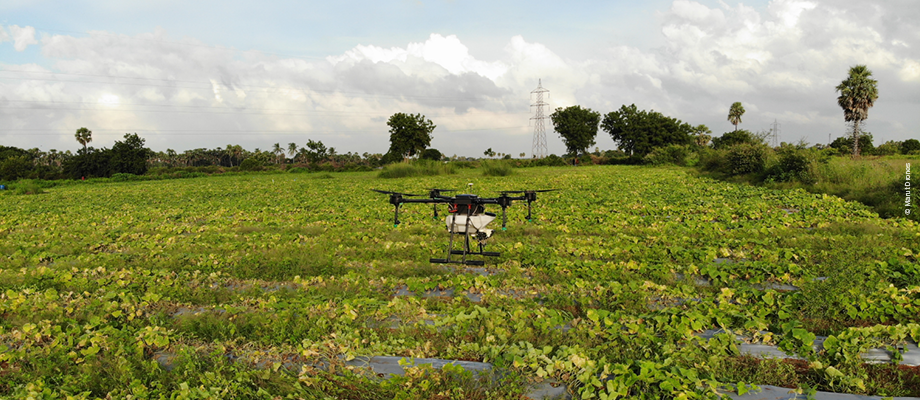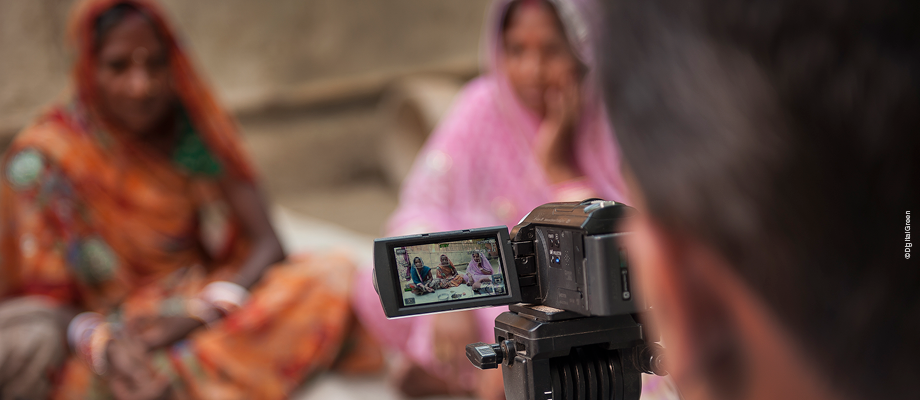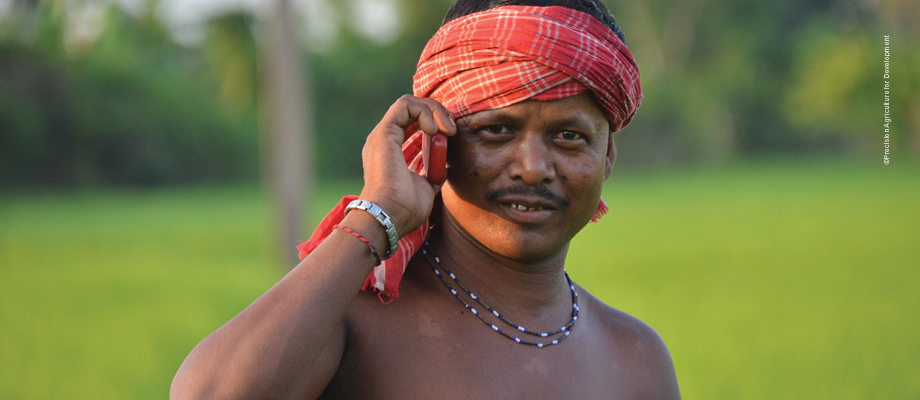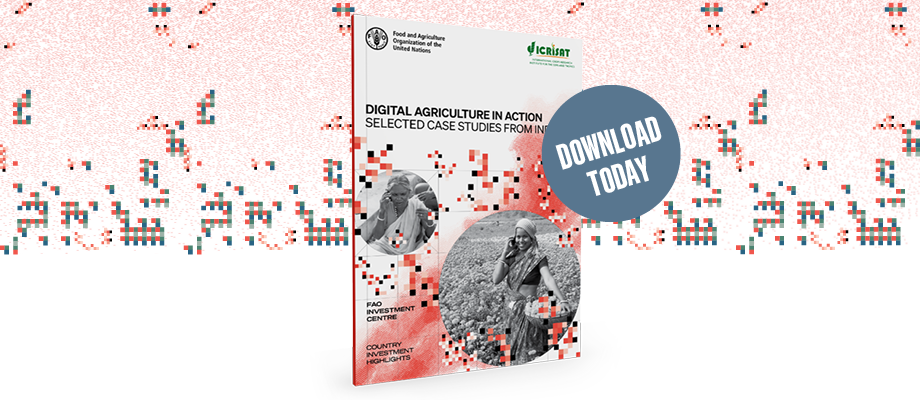Transforming food systems in India with digital agriculture

The report from the Food and Agriculture Organization of the United Nations (FAO) Investment Centre and the International Crops Research Institute for the Semi-Arid Tropics (ICRISAT) looks at successful initiatives which leverage digital technologies to improve value-chain processes and build capacity and livelihoods – generating positive change for agriculture workers.
“To promote rural transformation and address agrifood system challenges, new development approaches are needed that combine pioneering policies, technologies, use of digital and other innovations,” said John Preissing, Deputy Director, FAO Investment Centre. “The exponential growth of digital technologies in India generates vital opportunities to stimulate sustainable rural development and support agriculture resilience.”
Cutting-edge solutions to grass-root challenges
‘Digital agriculture’ essentially means the use of information and communications technologies (ICT) and data systems to develop and deliver targeted information and services, to make farming more profitable and sustainable – while supplying safe, nutritious and affordable food.
In the new report, case studies from across India showcase the application of various digital agriculture solutions, demonstrating their benefits and impacts, as well as drawbacks.
Technologies include agriculture e-extension, financial technology (fintech), remote sensing, precision agriculture, e-commerce, artificial intelligence (AI), drones and satellite imagery.
Globally, food systems are under threat from climate change, droughts, desertification, loss of arable land and a lack of rural infrastructure investment. Indian farmers also grapple with rising cultivation costs, declining soil fertility, labour shortages, and uncompetitive or impenetrable markets.
Access to timely and accurate information, tailored to specific locations and conditions, is fundamental for farmers to make the most of their resources in changing circumstances.
Digital technologies can bridge information gaps, improve access to market information, enhance access to micro-finance, support the urgent containment and management of diseases and pests, and advance agriculture human capital – all enticing prospects for India’s disadvantaged and beleaguered farmers.

Ripe for an agriculture technology revolution
India’s 130 million farmers are mostly smallholders, with more than 22.5 percent living below the poverty line. Large tracts of land are unfertile, with yields stagnating due to decades of unsustainable agricultural practices. Farm mechanisation is currently relatively low.
Yet, India is self-sufficient in food production and is the seventh largest agri-produce exporter in the world. It is one of the world’s top producers of cereals, pulses, fruits, vegetables, milk, meat, and fish.
At the same time, ICT is becoming more accessible and affordable, driving mass adoption. Internet penetration in India stands at almost 40 percent, with an active internet population projected to reach 900 million by 2025. A staggering 250 million Indians own smartphones.
A surge in agri-entrepreneurs and start-ups are driving digital agriculture innovation. Ever-cheaper mobile phones and apps can deliver agriculture advice services, weather information and crop data. They can enable access to market intelligence and e-commerce platforms, connecting farmers directly with buyers.
“ICT is transforming agriculture from a labour-intensive profession to a knowledge-intensive profession. Digitalization will support Indian agriculture to become self-sustainable and globally competitive,” said Dr Sreenath Dixit, Principal Scientist & Head, ICRISAT Development Center.

Reducing vulnerability through tech
India’s smallholders harvest only 30 to 50 percent of what their lands are actually capable of producing. This vast yield gap is a direct driver of rural poverty.
Since most Indian farmers are dependent on rain-fed agriculture, climate change brings additional challenges and risks to their livelihoods.
Digital agriculture can empower farmers to adapt, while enabling farms to become more productive and profitable. Farmers can instantly understand how much they have cultivated, produced and sold.
Knowing what and when to sow, when to apply fertilizer and water, when to harvest, where to sell and at what price enables farmers to maximise yields and strengthens their livelihoods.
Farmer Producer Organizations (FPOs) in India are expanding, building on digital innovations. Farmers are realizing the benefits of aggregation, accelerating access to services and e-commerce, leading to improved products and higher market-prices.

Supporting farmers to digitize
Despite progress and potential, most Indian farmers are not tech-savvy – yet.
While the Government of India has worked to educate farmers through online learning portals and SMS information, they require further investment in digital literacy capacity building and training.
Advancing government support for fintech would enable farmers to readily access credit and insurance, allowing them to innovate. Agri-tech start-ups would benefit from open access to government data, enabling emerging technology to be adapted to local needs.
Technology implementation and integration involves huge upfront costs. Developing connectivity infrastructure and expanding digital agriculture requires sustained and coordinated investment from public and private sectors at local, state and national levels.
There are many lessons to be learned from the experiences of India’s farmers in digital agriculture. Importantly, delivering agri-tech solutions to meet farmers’ needs and aspirations requires connection, coordination and collaboration, between the public, private, political, physical – and digital – spheres.

